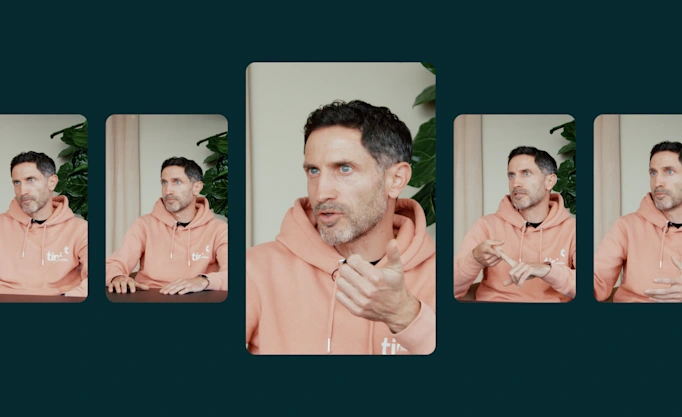5 ways customer’s banking expectations are changing

From the demise of cash and physical bank branches, to the rise of digital banks and automation, technology is irreversibly changing the way we manage our money – and what we expect from the services that do.
The rapid rise of digital services has driven a change in what consumers expect, in every area of their lives. The likes of Netflix, Amazon and Uber have fuelled an “on-demand” and “one-click” mindset that people are no longer willing to overlook when deciding who to give their business to – and financial services is no different.
Banking in particular is going through its own revolution, and although a lot of consumers won’t be aware of PSD2 and open banking per se, what they will notice is the new apps and services springing up to help them better manage their money.
Here are five ways customer expectations are changing when it comes to their finances, and what providers should keep in mind when trying to keep their customers’ loyalty.
1. Consumers want the best financial products (no matter who provides them)
Once PSD2 is in full force, the cost for a consumer in terms of time, resource and effort to switch from one bank to another – or to a third party – will be massively reduced. People are naturally driven by wanting value for money, and the open banking movement will make it easier to know if they are getting it.
People will be able to go to their chosen app, authenticate access to their bank, and aggregate all of their financial information in one place. Sophisticated algorithms can show them if they can get a better deal on banking products elsewhere, and payment initiation allows them to switch money from one service to another in seconds. In short, they can get a more seamless, digitally native experience, at a better price.
So a consumer may not care who delivers the service as long as it seems the most relevant to them. Which explains why in a recent survey we conducted with hundreds of bankers across Europe, almost half (48%) are actively looking at reducing the fees associated with bank accounts, and 56% believe customer loyalty towards banks will be significantly reduced because of open banking.
2. Consumers want apps with a better UX
Because many people are used to digital channels making life easier on a daily basis, they will naturally be drawn to the financial providers whose services can be delivered this way. For instance, many people want to be able to manage money seamlessly on their mobile phone, on the move, without feeling restricted by the actions they can take.
The businesses that survive and thrive in a post-PSD2 world will be those that can tailor their services to meet consumers’ growing digital expectations.
But right now there is a problem. Just days away from PSD2 going live, the European banks’ APIs (the channel through which financial data should be shared) are not good enough to deliver the slick experiences users have come to expect. If this continues to be the case, it could end up reflecting badly on the banks, because customers could feel that their bank is limiting them from using the new services that are out in the market.
3. Consumers are willing to test and find the right services
The rise of challenger banks with unique selling points has made consumers smarter about spreading their finances across different providers – to get the best service for any given situation.
While most people are not really abandoning their traditional bank accounts just yet, they are supplementing them with accounts from digital banks like Monzo, N26, Revolut and Starling instead.
This way, they can take advantage of fee-free payments and better exchange rates when travelling or sending money abroad. Or make day-to-day payments where spending and budgets can be tracked easily, making people’s finances more manageable and more fun.
And they clearly have momentum on their side. Monzo estimates that 55,000 people are joining them every week, while Revolut has stacked up over 6 million customers in its relatively short life span. N26 is live in 25 European countries with over 3.5 million customers to date, and Starling won Best British Bank and Best Current Account 2019 at the British Banking Awards - the Oscars of the banking world.
4. Customers want 24/7 access and frictionless service
As more and more people turn to the convenience of online banking and cashless payments, the knock-on effect is felt throughout the banking sector as bank branches close and cash payments dwindle.
In the UK, 69% of adults access their finances online in 2018, up from 35% 10 years ago. Meanwhile, bank branches on average saw a 26% fall in people coming through their doors in the five years between 2012 and 2017. Consumers now visit a bank only four times a year on average. And many never set foot in a branch at all – meaning they are quickly becoming obsolete.
Similarly, only 13% of Swedes use cash to purchase products, cashless transactions have overtaken cash in Germany for the first time, and nearly half (48%) of the almost 12,000 businesses surveyed by Credit Manager Intrum across Europe say their country will be cashless within 10 years.
5. Consumers want access to great advice
Challenger banks, startups and fintechs are responding to a customer desire for better digital advisory by imagining new types of intelligent financial services. And they all aim to do the same thing: give consumers automated, digital advice.
Right now, this could mean using AI to analyse customers’ financial data and recognise patterns in their financial behaviour. By understanding customers’ needs and desires through all of life’s stages, they can be offered a seamless service that makes financial decisions easier to act on.
But in the future – sometime in the next 20 years or so – we’re talking about fully automated finances and advice, that can manage people’s money without the customer having to lift a finger. Instead, the technology would make the financial decisions and automatically move people’s money to wherever the best deal is.
Creating customer loyalty
From all of the ways expectations are changing, there is one clear message for any bank, startup or fintech wanting to attract customers and keep them: above all else, people want the best-value financial products for their needs. If they can get the same deal from a provider that also gives them a better user experience, they’ll switch in a heartbeat.
More in Open banking

2025-11-20
3 min read
Tink powers the UK’s first cVRP transaction with Visa A2A
In partnership with Visa, Kroo Bank, and Utilita, we’ve just helped demonstrate the UK’s first commercial variable recurring payment (cVRP) using the Visa A2A solution – and it’s a big step forward for how people make regular payments.
Read more

2025-06-09
11 min read
The case for “Pay by Bank” as a global term
Thomas Gmelch argues that "Pay by Bank" should be adopted as a standard term for open banking-powered account-to-account payments to reduce confusion, build trust, and boost adoption across the industry.
Read more

2025-06-02
3 min read
Tink joins Visa A2A – what it means for Pay by Bank and VRP
Visa A2A brings an enhanced framework to Pay by Bank and variable recurring payments (VRP) in the UK, and Tink is excited to be one of the first members of this new solution.
Read more
Get started with Tink
Contact our team to learn more about what we can help you build – or create an account to get started right away.
